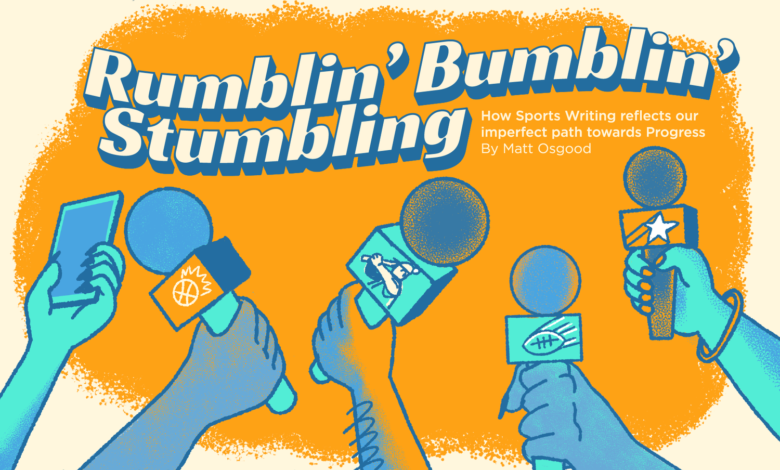Rumblin’ Bumblin’ Stumblin’ — On the Evolution of Sports Journalism and the Changing Role of Sports in Modern Life — Good Beer Hunting

As for the players, they got chummy with the writers because players needed writers: They were the intermediaries to the fans who picked up the daily paper the next morning. Reporters did more than just catalog wins, losses, and statistics; their recaps brought games back to life for those who couldn’t watch or listen to their favorite teams play live.
Nowhere was this more evident in early sports writing than in Grantland Rice’s almost mythological coverage of the University of Notre Dame football team. “Outlined against a blue-gray October sky, the Four Horsemen rode again,” began the prose that appeared in the New York Herald Tribune in 1924, and which helped catapult the Fighting Irish to the national stage. These players—backfield members Harry Stuhldreher, Don Miller, Jim Crowley, and Elmer Layden—were described in larger-than-life terms. In what the New York Times later called “The Sports Story that Changed America,” Rice wrote:
“A cyclone can’t be snared. It may be surrounded, but somewhere it breaks through to keep on going. When the cyclone starts from South Bend, where the candle lights still gleam through the Indiana sycamores, those in the way must take to storm cellars at top speed. Yesterday the cyclone struck again as Notre Dame beat the Army, 13 to 7, with a set of backfield stars that ripped and crashed through a strong Army defense with more speed and power than the warring cadets could meet.”
Whereas modern-day coverage—on television, the internet, and on social media—makes players more accessible, more human-sized, this era sold newspaper copies based on reporters’ rare access to these supposed super-humans, access which wasn’t yet available to average fans. The idea that the late Frank Deford, a longtime sports writer, and his contemporaries could ride a train with Mickey Mantle and the New York Yankees may seem foreign to anyone sitting in an Intro to Journalism class now, where keeping a distinct separation between reporter and subject feels essential to maintaining objectivity. It was on those trips that Deford was witness to not-so-wholesome extracurriculars, like the infamous 1957 Copacabana brawl that injured a New York deli owner and which may (or may not) have included some Yankees players. Then there were the alleged affairs.
That proximity came in other forms. Take the relationship between Howard Cosell and Muhammad Ali: The broadcaster and the boxer struck up a kinship during the prime of Ali’s career in the 1960s, despite their numerous differences. Cosell was a Jewish kid from Brooklyn born in 1918, and Ali a Black boxer from Louisville born in 1942, but their connection was forged nonetheless. Cosell was among the first to recognize Ali by his chosen name, rather than his given name of Cassius Clay. He was also a great supporter of Ali’s refusal to enter military service, and of the protest posed by Tommie Smith and John Carlos after they raised their fists in the Black Power salute at the 1968 Mexico City Olympics.
Even if these kinds of athlete-journalist relationships feel less common today, that need for solidarity hasn’t changed. As every cry of “stick to sports” in response to athletes and reporters commenting on social issues shows, sports arenas remain arenas for the ongoing struggle for social progress.
Source link
